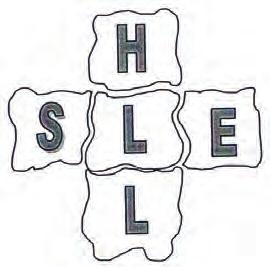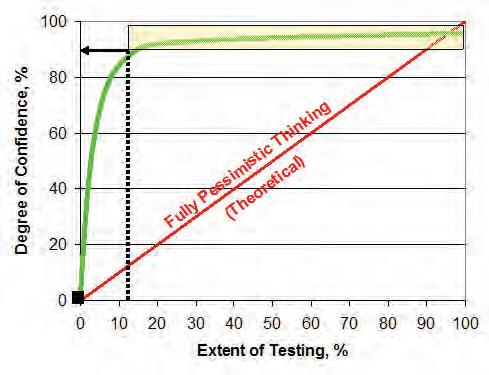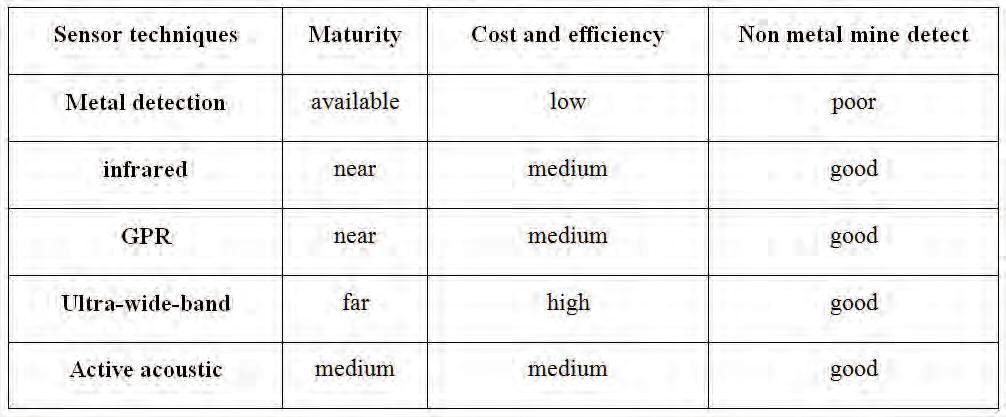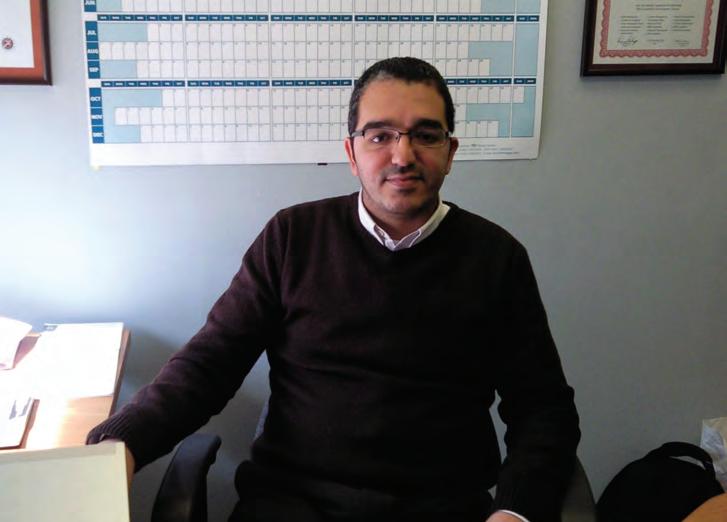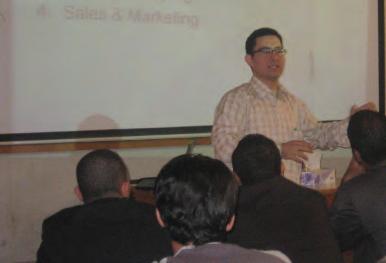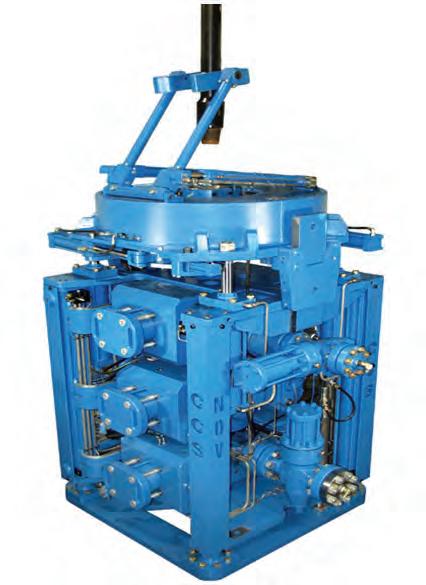
5 minute read
MANAGED PRESSURE DRILLING
“A new way of looking at drilling hydraulics …Overcoming conventi onal drilling challenges” Don M.Hannegan, Weatherford Internati onal Ltd.
As the current reserves is being depleted, it was necessary to begin drilling reservoirs that are greater in depth and more complex, some industry professionals stated that 70% of the current hydrocarbon off shore resources are considered to be economically undrillable using the conventi onal drilling methods.
Advertisement
Managed Pressure Drilling (MPD) is a new technology that uses tools that are similar to those of underbalanced drilling in order to control pressure variati ons while drilling a well. The aim of MPD is to improve the drilling effi ciency of a well by alleviati ng any drilling issues that can arise.
MPD can improve the economical value for any well being drilled by reducing the rig’s nonproducti ve ti me (NPT)which simply is; the ti me measured when a rig is not drilling. Therefore, many of the drilling problems in any well can be reduced by using this technique.
Pressure-Gradient Windows
As a well is being drilled, the drilling fl uid is circulated in the well bore to obtain a specifi c bott om hole pressure (BHP). The density of the fl uid is determined by the formati on and pore pressure gradients and the wellbore stability.
Mohammed S. Alshabrawy Faculty of Petroleum and Mining Engineering Suez Canal University
Fig. 1 shows a pressure gradient profi le of a well; this profi le represents the change in pressure with the increase in depth, the area enclosed within the pore pressure and the fracture represents the allowable pressure window.
Fig. 1.
The main aim while drilling a well is to keep the pressure within the pressure window range. In a stati c well, the pressure is determined by the hydrostati c pressure of the mud whilst in conventi onal drilling, the only way to adjust the pressure during stati c conditi ons is to vary the mud weight in the well.
Where: BHP: Bott om Hole Pressure , HH(MW): Hydrostati c Head of mud , AFP: Annular Fricti on Pressure.
Fig. 2 shows the problems that can occur when dealing with ti ght pressuregradient windows. When the well is stati c, the pressure in the well is less than the pore pressure, therefore the well undergoes a kick and hydrocarbons begin to fl ow into the well. Aft er a connecti on is made; the pumps restart, the BHP (Bott om Hole Pressure) increases, and then pressure also increases above the fracture-pressure resulti ng in a loss of circulati on or fl uid fl owing into the formati on. The aim of MPD is to manage the pressure by confi ning it inside the pressure gradient window which simultaneously leads to avoiding various drilling problems.
How Managed Pressure Drilling Works
The basic technique applied in MPD is manipulati ng the BHP and the pressure profi le as required. In conventi onal drilling, the (BHP) can be calculated by the summing of the mud weight of the hydrostati c head and the Annular Fricti on Pressure (AFP) which is the fricti on pressure that results from the circulati on of the mud while drilling. ECD is defi ned as the “Equivalent Circulati ng Density” of the bott om hole pressure, it is basically the BHP while circulati ng but converted into the units of mud weight. During a connecti on, the pumps are turned off and the fl uid stops circulati ng, thus eliminati ng the annular fricti on pressure and reducing the BHP to the mud hydrostati c pressure.
Fig. 2.

MPD uses a closed and pressurized mud system where with such a system; the equati on for the BHP can be varied to include the backpressure. Adjusti ng the backpressure while drilling can quickly change the BHP. The basic confi gurati on for MPD is to have a Rotati ng Control Device (RCD) and a choke. The RCD diverts the pressurized mud returning from the annulus to the choke manifold. A seal assembly with the RCD enables the mud returns system to remain closed and pressurized. The choke along with the pressurized mud return system allows the driller to apply backpressure to the wellbore. If the pressure starts to climb above the fracture pressure of the formati on, then the driller can open the choke to reduce the backpressure bringing the pressure down. If the need to increase the pressure throughout the well arises, the driller can simply close the choke to fulfi ll that need.
The Need for Managed Pressure Drilling
The need for MPD is clearly illustrated by current drilling stati sti cs and problems that currently exist. More clarifi cati on on that point is given by the aid of Fig.3 which shows the results of a database search of NPT (Non-Producti ve Time) while drilling off shore gas wells.
MPD can solve a large percentage of the problems stated in the above database, especially those that are caused by wellbore pressure deviati ng out of the pressure gradient window during drilling operati ons. Table 1 shows the NPT from Fig. 3 that could be reduced by using MPD.

the pressure exceeds the fracture pressure-gradient is losing mud into the formati on. Reservoir damage can also occur and the wellbore can become unstable. These problems accounts for more than 40% of the drilling problems in the last ten years this study had covered. Also according to this study ,If we can eliminate the problems with MPD, we could reduce the drilling hole costs by nearly $39 per foot drilled, which means that in wells drilled to 15,000 ft , that can equate to an average savings of $585,000 per well.
Conclusion
Drilling programs using MPD technology are in the progress of enabling more precise wellbore pressure management; MPD is now being widely recognized as a step-change technology, more readily acceptable to off shore drilling decisionmakers than true-state UBD.
Table. 1.
Numerous problems can occur if thewellbore pressure goes below the pore pressure gradient. At shallow depths, water or gas can fl ow into the well bore and as previously menti oned above, a kick can occur. With a lower pressure in the wellbore, the hole can also become unstable and start to fall in on the drill pipe. A problem that could lead to pipes becoming stuck or even cause a twist off or break in the drill pipe. The main problem when

_________________________________ References 1. Matthew D. Martin, “Managed Pressure Drilling techniques and tools”, 2006, Texas A&M University. 2. Charles R. Stone, “Sometimes Neglected Hydraulic Parameters of Underbalanced and Managed Pressure Drilling”, 2008 SPE/IADC Managed Pressure Drilling and Underbalanced Operations Conference and Exhibition. 3. E&P Magazine, “Managed Pressure Drilling adds value”, September 2004 4. Schlumberger’s Oil Field Glossary.

